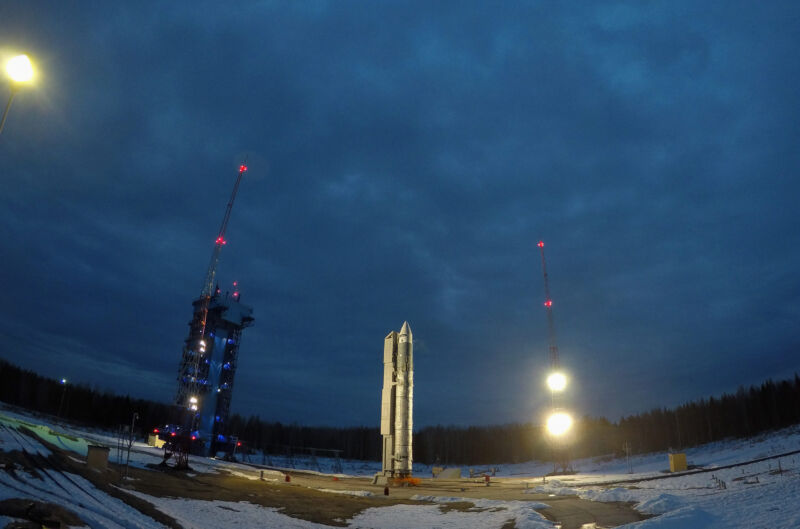On Christmas Day, 2013, the relatively small Russian Rokot rocket launched from the Plesetsk site in the northern part of the country. The mission carried three small military communications satellites, but observers noted that the mission appeared to eject a fourth object into orbit.
A few months later Russia confirmed that this object was a satellite, and it came to be known as Cosmos 2491. To the surprise of many sky watchers, this satellite then began to perform novel orbital maneuvers, such as raising and lowering its orbit, that demonstrated rendezvous and proximity operations.
Then it happened again. In May 2014 another Rokot booster carried three communications satellites into orbit as well as a fourth object, which was designated Cosmos 2499. Finally, this happened a third time in April 2015, with a third mystery satellite known as Cosmos 2504.
These satellites, which became known as "Object Es" as they were the fifth object cataloged from these launches in addition to the upper stage and three communications satellites, have interested the US national security community. However, it is not entirely clear what the purpose of these satellites is, or to what end the Russians aim to use these rendezvous and proximity operations. Some of these maneuvers are cataloged, in detail, on the Russian Space website.
There is no evidence they were part of a weapons test, experts say. However, the Object E satellites are now causing a more significant concern in low-Earth orbit. In 2019, Cosmos 2491 shed about 20 pieces of debris. Then, on Monday, the US military's 18th Space Defense Squadron confirmed that Cosmos 2499 had broken apart in early January. This breakup occurred at an altitude of 1,169 km and resulted in 85 pieces of trackable debris, said the military squadron, which is tasked with tracking all human-made objects in Earth orbit.
Brian Weeden, an expert in space debris at the Secure World Foundation who has studied the Object E satellites, said he did not think the debris-shedding events on both Cosmos 2491 and Cosmos 2499 were caused by collisions in orbit. Rather, they appear to be part of a repeating pattern.
"This suggests to me that perhaps these events are the result of a design error in the fuel tanks or other systems that are rupturing after several years in space rather than something like a collision with a piece of debris," Weeden said.
In terms of orbital debris, this is likely not a catastrophic event, Weeden said. There are not that many sizable chunks of debris from the small satellites; however, this debris will be long-lived, as it starts out at such a high altitude above Earth's atmosphere. By way of comparison, debris produced by China's anti-satellite test in 2007, when a 750-kg satellite was destroyed at an altitude of 865 km, is expected to remain in orbit for decades more.
So, it seems, fragments of the Cosmos breakups will likely be with us for the remainder of the 21st century before finally tumbling into Earth's atmosphere.



3175x175(CURRENT).thumb.jpg.b05acc060982b36f5891ba728e6d953c.jpg)


Recommended Comments
There are no comments to display.
Join the conversation
You can post now and register later. If you have an account, sign in now to post with your account.
Note: Your post will require moderator approval before it will be visible.